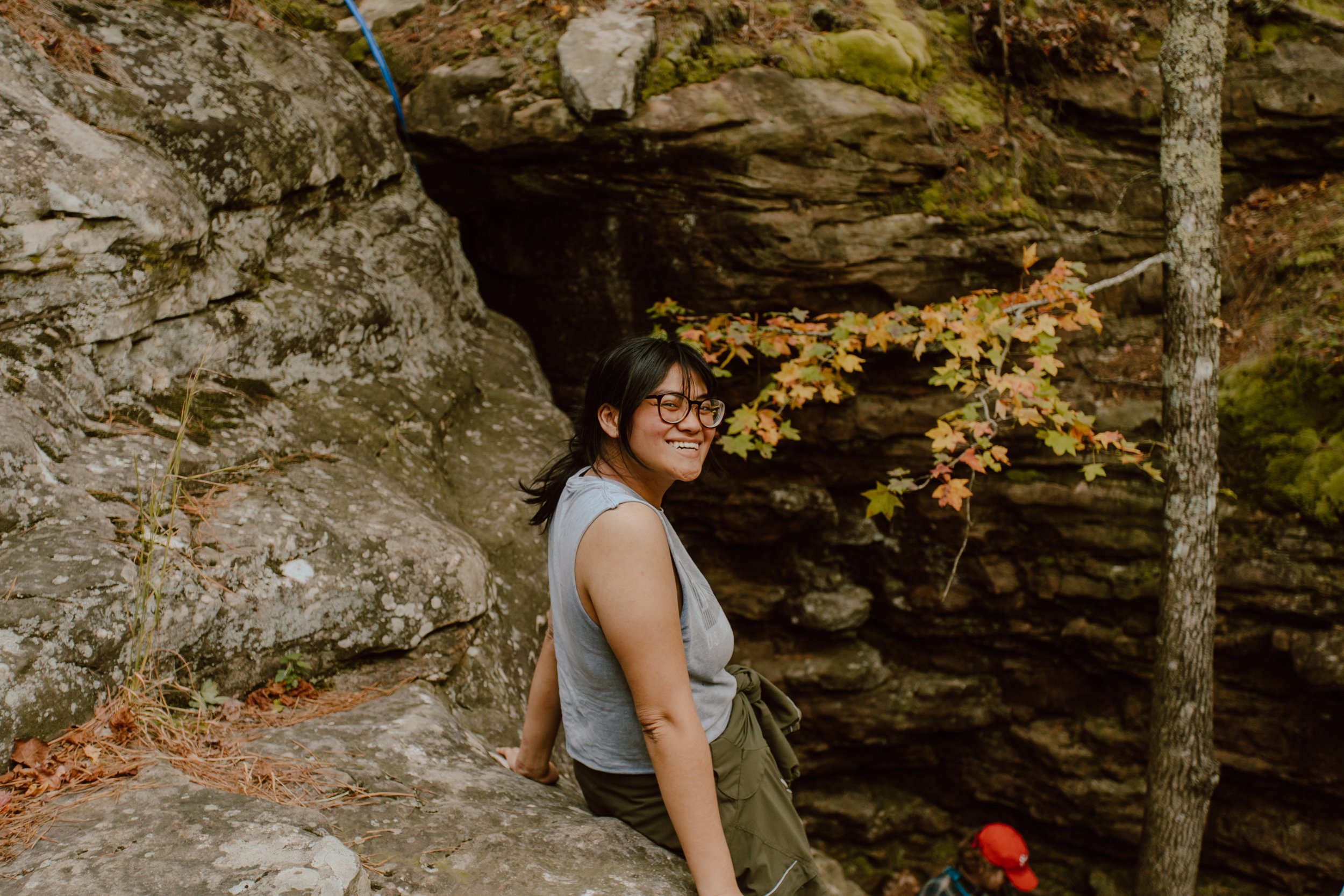The Aesthetics of Hiking and Camping
Written By Elisa Peters
Photographed By Elisa Peters & Mindy Welland
Modeled By Mindy Welland, Hallie Osborn, Ellen Anderson, Ian Street, Desiree Daos, & Elisa Peters
What does it mean to emulate the aesthetic of someone who is “granola?” Is it the Pinterest-perfect hiker, repping the Chacos, Columbia PFG shorts, Lululemon long-sleeve, and that one Life Is Good backpack with the camelback water bottle attached by a carabiner? Perhaps this is what it means to be granola. But, while these items are certainly great products, they don’t necessarily have to be the ones you use. Hiking and camping forces an individual to focus on the functionality of their clothing, accessories, and supplies instead of the trendiness of the aesthetic. Therefore, no matter the brand, the use of simple basics and durable clothing can allow you to have a successful hiking or camping trip.
So, what is a hiker or camper actually packing in their bag? What are they actually wearing? Oftentimes, hiking and camping happen simultaneously. Some may think this is obvious, but a plethora of campsites are situated next to parking spots. Other times, you have to hike to a desired location, camp, then hike back out the next morning. The following clothing and materials listed are necessary for the latter scenario. For an individual, an insulated sleeping bag and a foldable sleeping pad can be just enough for a night of camping. Depending on the weather conditions though, one may prefer to sleep in a tent, or, as an alternate option, a hammock. Moreover, bringing campsite materials such as matches, lint (yes, you can collect this from your laundry), a singular cooking pot, utensils, a pocket knife, a headlamp, toilet paper, microfiber towels, a bluetooth speaker, and at least a 32oz water bottle, are great starting materials. Any backpack that can strap onto your body, transferring the weight of your pack onto your hips and shoulders, is preferred for long-distance hiking. Brands such as Osprey produce durable and reliable backpacks, guaranteeing a life-warranty if they tear or break.
In terms of the clothing, a hiker may dress in layers, provided that they will be walking or climbing during the day, breaking a sweat, then sleeping in cooler temperatures at night. This can be seen with the use of spandex beneath cargo or breathable pants that can zip or unzip into shorts, no need for any specific name brand. For tops, tanks underneath long sleeve shirts and vests is another great configuration of layering. Moisture-wicking tops are nice, even cotton shirts are another comfortable and accessible option. For shoes, it’s great if you can find second-hand brands such as Merrell or Salomon. These hiking shoes provide great support for your feet when trekking in often unstable terrain. Although they’re an investment, good hiking shoes can last you a long time. Socks are also an important factor in hiking. The most practical socks are thick crew socks, helping to keep your feet warm and prevent ticks, chiggers, or mosquitoes from biting at your ankles. As for accessories, hats, sunglasses, and bandanas are fundamental when hiking. These are often the most fun to bring along since they allow for self-expression while also holding functional value.
Lastly, one of the most important aspects of hiking and camping is the opportunity to explore nature itself. As an individual, you are able to collect or chop wood to make a fire, boil your own drinking water, roast your own vegetables, even set up a place of rest via a tent or hammock. There is something to be said about the rewarding feeling of building up a campsite and packing it back down the next day after it has served the function of providing protection. Likewise, waking up to the sunrise and then walking into the distance to pee on a leaf makes you appreciate everyday resources like electricity and plumbing that are accessible to most of us in abundance. In this way, nature is humbling.
There is so much beauty in the Midwest, its myriad of rolling hills that make up the Ozarks. Although its wilderness is less regulated, it allows for an individualized experience for the hiker. The focus on functionality in a hiker's clothing and materials are connected with their ability to explore and discover the area around them more freely. You don’t have to have the most expensive gear or clothing, or even the most extensive knowledge, to appreciate and learn from nature's marvel.





















